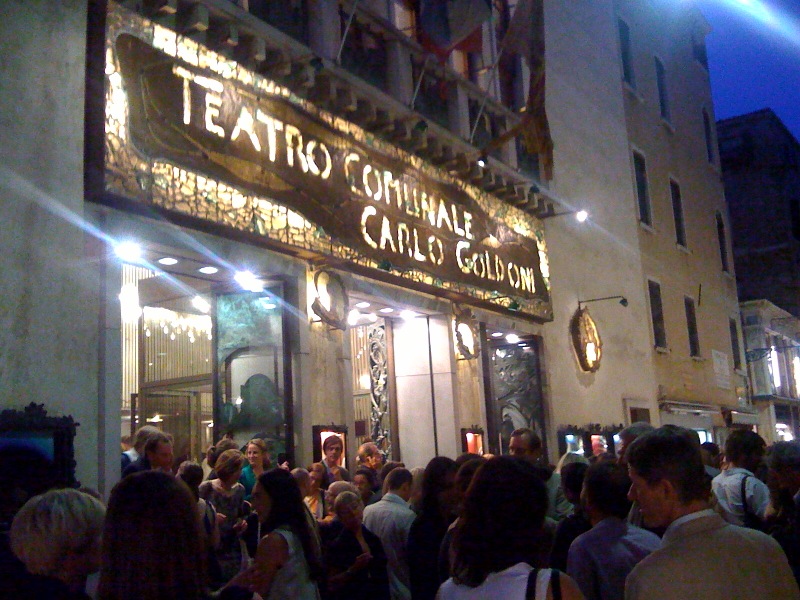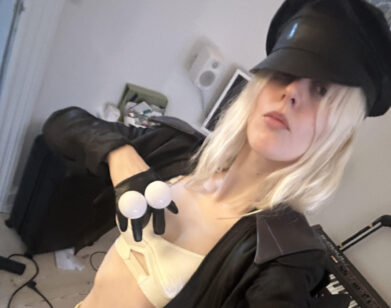Back to the Future

Photo by Patrick Li
Going anywhere in Venice is hard; getting to the Venice’s grand Teatro Goldoni is always a challenge but the pressure of getting there on time adds another dimension. But stumbling across friend and expert in all things chic Anne McNally always helps. She effortlessly guides us through various calles and around corners that reveal throngs of jet setters clamoring to get into the world premiere of Cerith Wyn Evans and Florian Hecker’s abstract opera “No night no day” commissioned by Thyssen-Bornemisza Art Contemporary.
Independent curator Norman Rosenthal, a longtime friend of Wyn Evans, introduced the piece, and the aforementioned artist as some of the most important in the world. Then the room went completely darkness. Slowly the screen lit up with gradations of grey. And it stayed that way. Not unlike a screensaver, waves of black blobs changed to white. Grey blobs changed to slightly darker grey. And then back again. And again. There was one spurt of blue, but overall the visuals seemed to never stop—like Wagner, or the ocean. Fitting, as at a dinner two nights before, hosted by Francesa von Hapsburg, Rosenthal insisted that as Wagner was his favorite, he expected five hours of entertainment. Wyn Evans warned in response, “that 40 minutes might feel quite the same.”
The aural experience of the opera was more varied (Of course I can reproduce neither, so see the exterior of the theater above). Deconstructed and reconstructed, various electronic sound elements surrounded you thanks to an amazing and sound system. The visuals and the music weren’t developed in conjunction with the sound, and the auditory immersion was clearly the focal point. Much more than electronica, the opera lacked only a human element to truly redefine abstraction.






